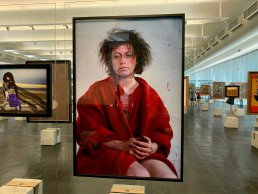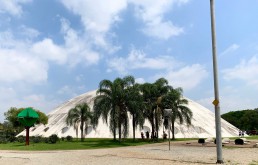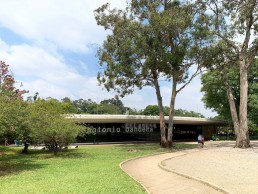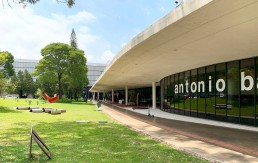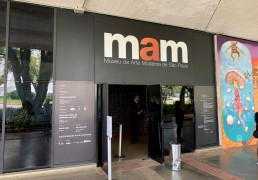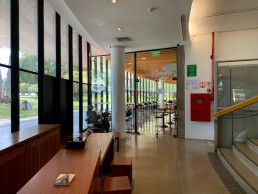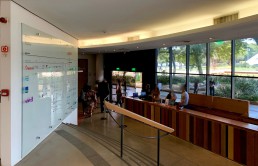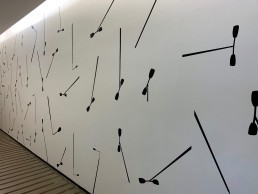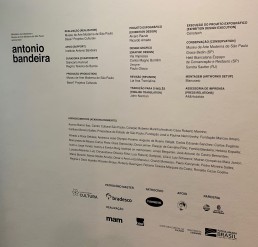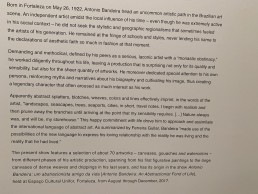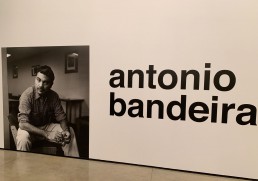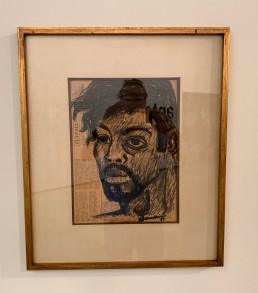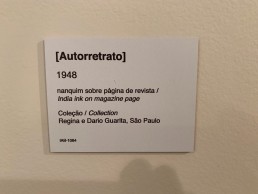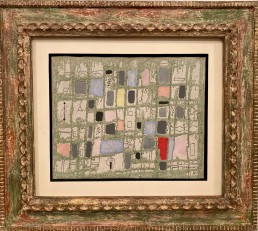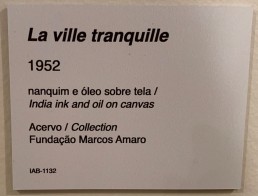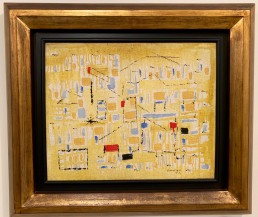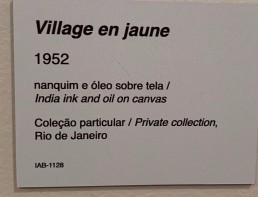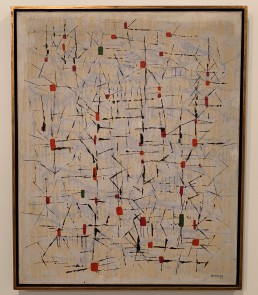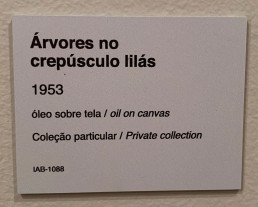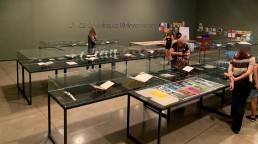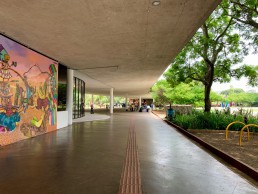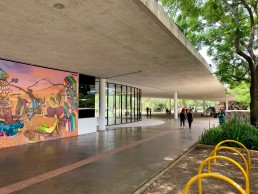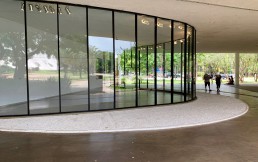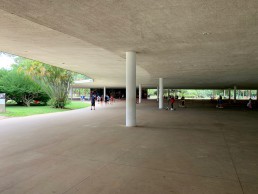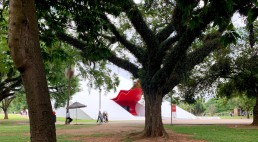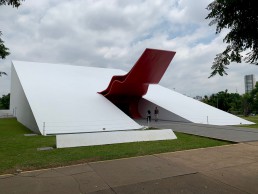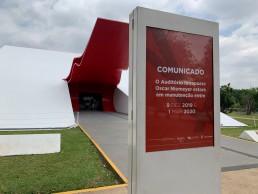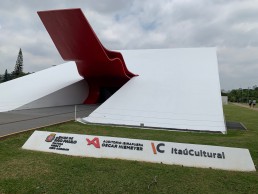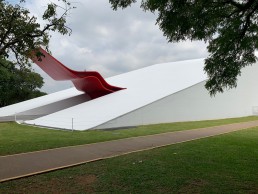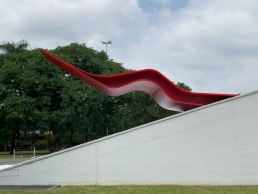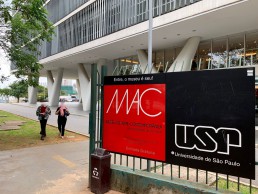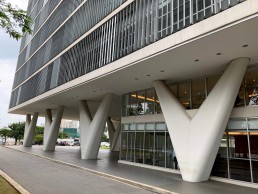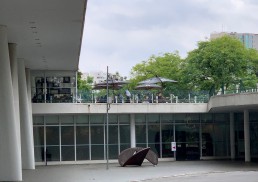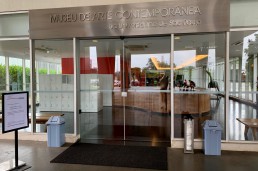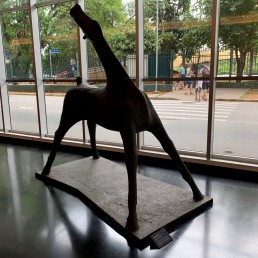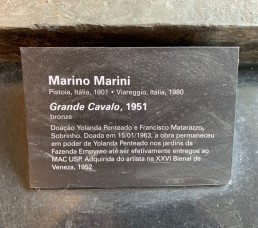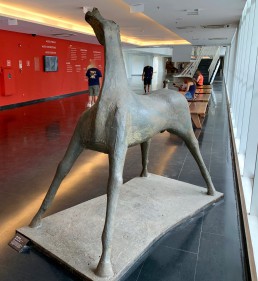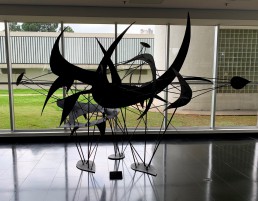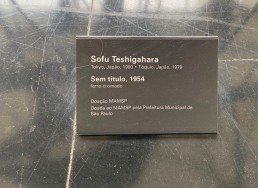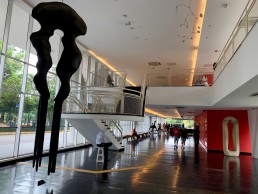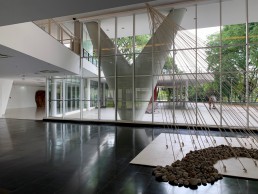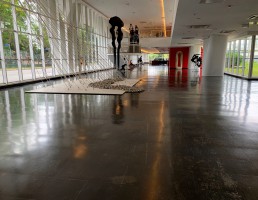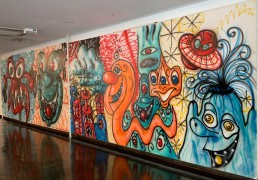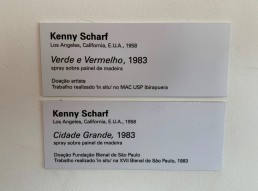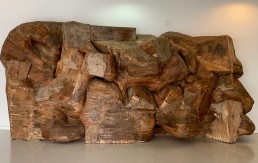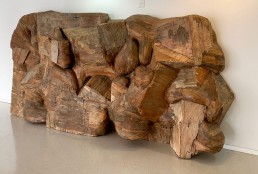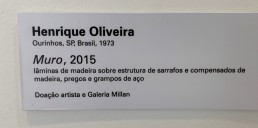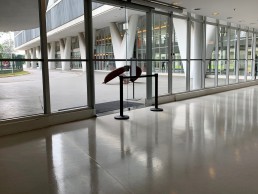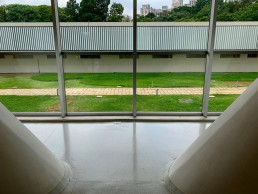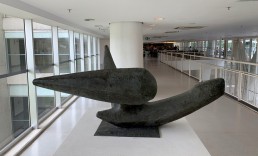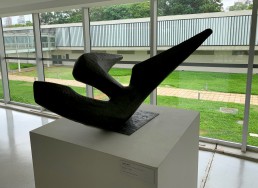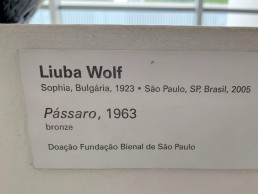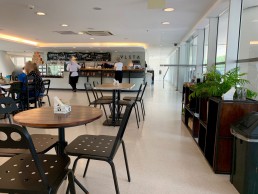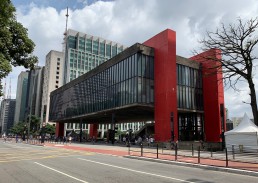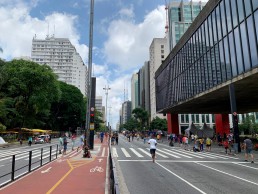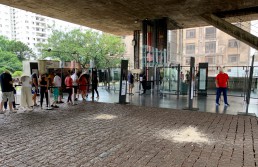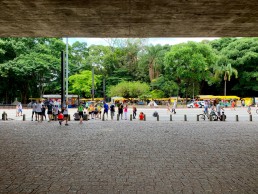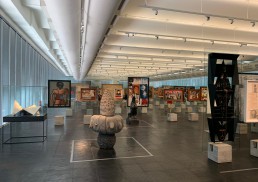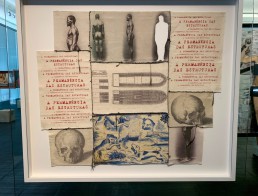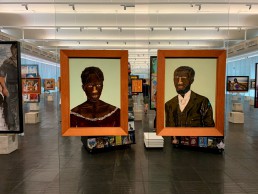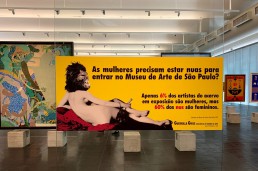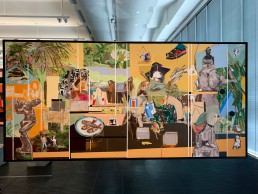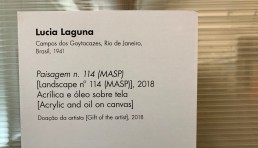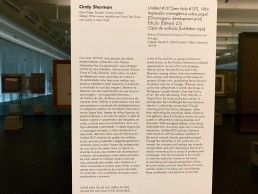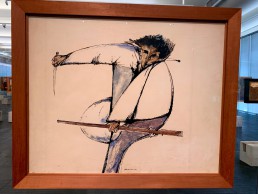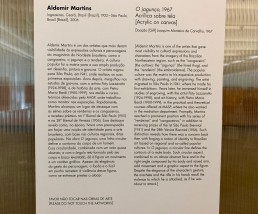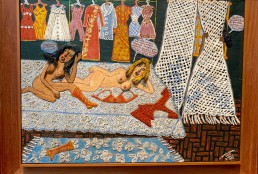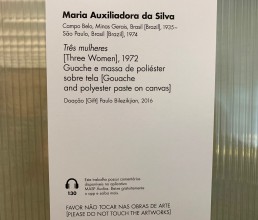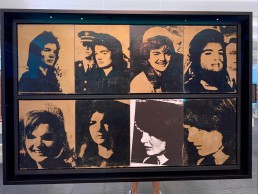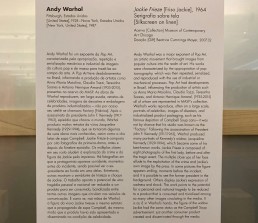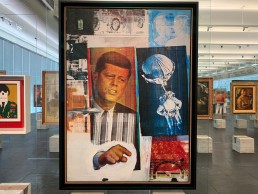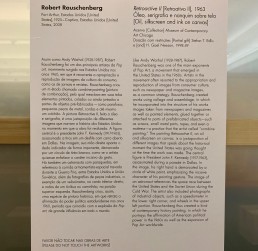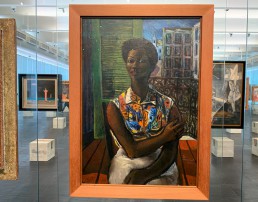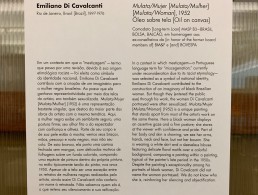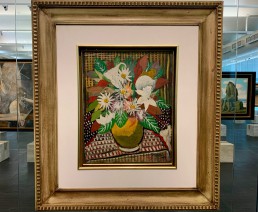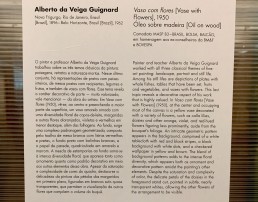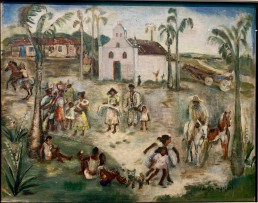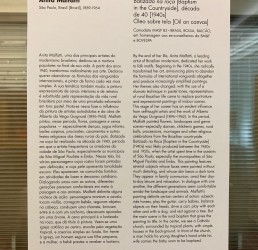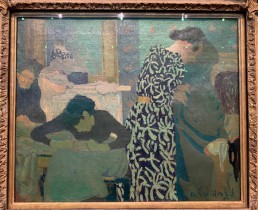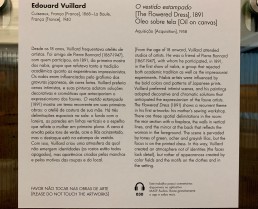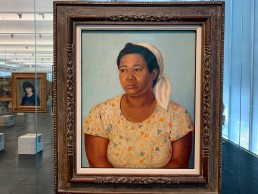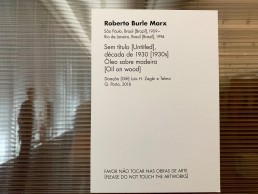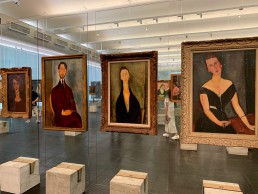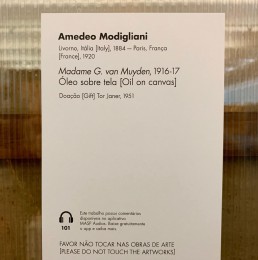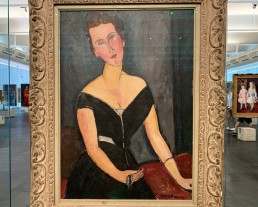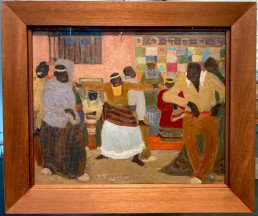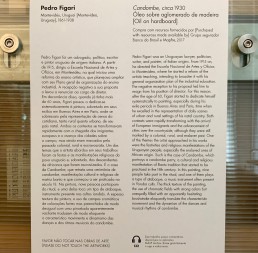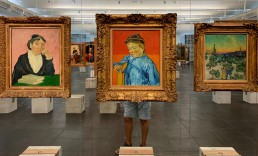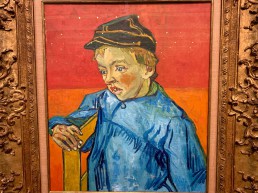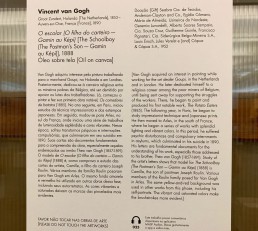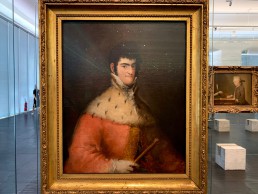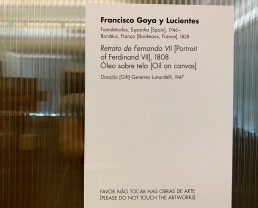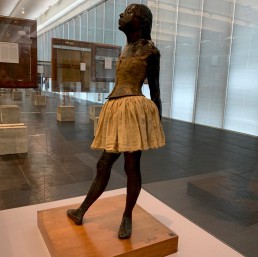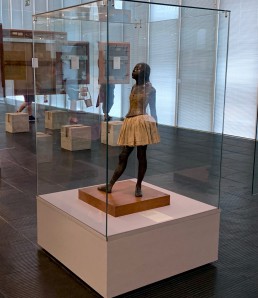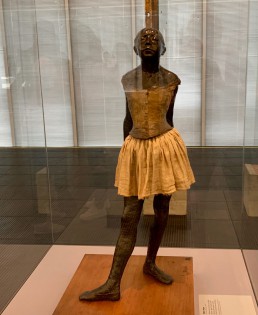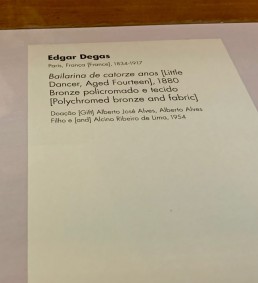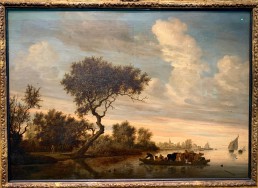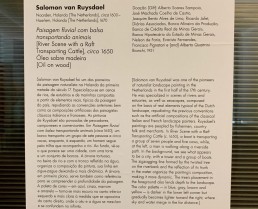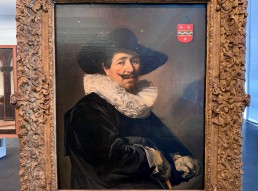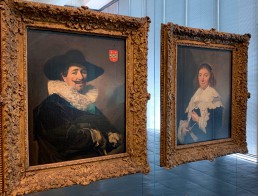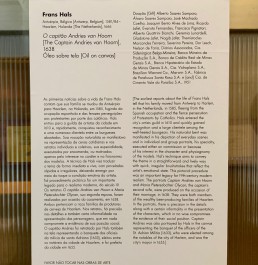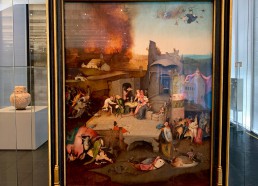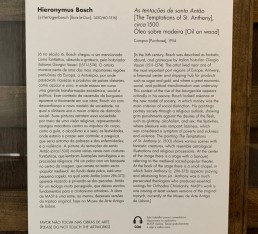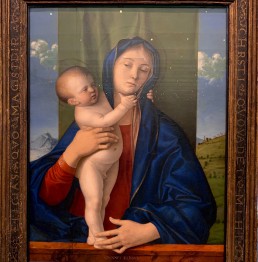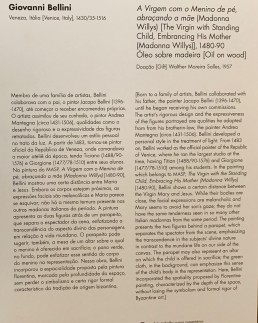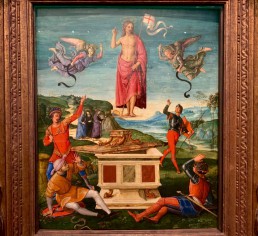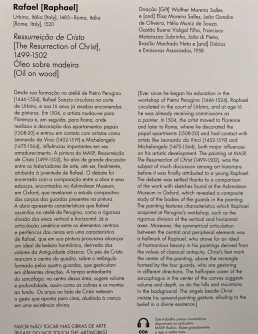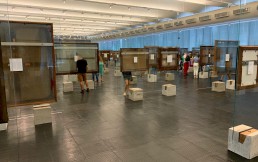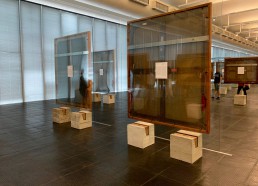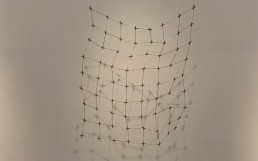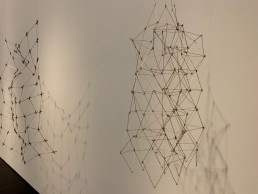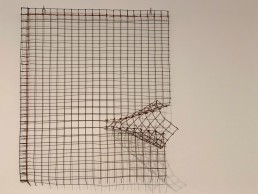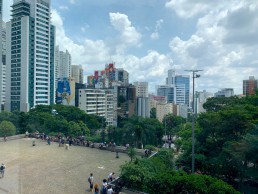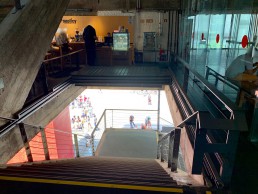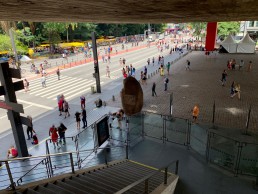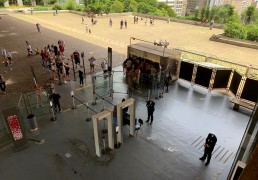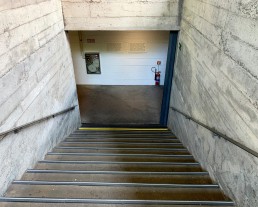Sao Paulo Art Museums
Museu de Arte Moderna, Museu de Arte Contemporanea en Museu de Arte Sao Paulo.
Van deze drie musea in Sao Paulo, zijn het Museo de Arte Moderna (MAM) en het Museu de Arte Contemporanea (MAC) in het Ibirapuera Park vlakbij elkaar en niet zo groot, dus erg goed te combineren. Bovendien is het Ibirapuera Park erg leuk en wel groot overigens. Zeker in het weekend is het vol met activiteiten, waaraan hele families deelnemen. Je vind er ook nog het Auditorio Ibirapuera van Oscar Niemeyer als bonus. Toen ik er was was dat gesloten ivm een verbouwing, dus ik heb alleen foto’s van de buitenkant kunnen maken. De collecties van beide musea zijn vrij verschillend. Het MAM heeft wisselende tentoonstellingen van met name Braziliaanse kunstenaars en MAC, wat bij de Universiteit hoort, heeft geen grote, maar wel een internationale collectie kunst van bekende kunstenaars als Marino Marini en Kenny Scharf.
Het Museu de Arte Sao Paulo (MASP) daarentegen is zeker groot. Het is een opvallend gebouw aan de Avenida Paulista met z’n enorme rode ‘poten’, maar het zijn geen poten, eerder hele grote rechte U- profielen, die de glas- en betonconstructie als het ware vasthouden. Vooral de manier van exposeren in het Masp is bijzonder. De schilderijen hangen niet aan een wand, maar staan op zich in een glazen display, zodat je er ook omheen kunt lopen en de achterkant kunt zien. Uniek in de wereld en omdat het anders is ook goed, omdat je de werken zo toch weer op een andere manier ‘ziet’.
Vooral op zondag is het MASP erg leuk om te bezoeken, omdat de Avenida Paulista dan is afgesloten voor verkeer en er van alles is te beleven. Vanuit het museum heb je dan ook nog eens een mooi uitzicht op alles wat er gebeurt.
ABOUT MASP
The Museu de Arte de São Paulo (MASP) is a private not-for-profit museum founded in 1947 by business mogul and patron of the arts Assis Chateaubriand (1892–1968), becoming the first modern museum in the country. Chateaubriand invited Italian art dealer and critic Pietro Maria Bardi (1900–1999) to direct MASP, and Lina Bo Bardi (1914–1992) to conceive the architecture and the exhibition design. With the most important collection of European art in the southern hemisphere, MASP’s holdings currently consist of more than 11 thousand artworks, including paintings, sculptures, objects, photographs, videos and pieces of clothing from various periods, from Europe, Africa, Asia and the Americas.
Initially located on the street 7 de Abril, in downtown São Paulo, in 1968 the museum was transferred to its current location on Avenida Paulista, in the iconic building designed by Lina Bo Bardi, which has become a landmark in the history of 20th-century architecture. Making use of glass and concrete, in her architecture Lina Bo Bardi put rough, unfinished surfaces into harmony with aspects of lightness, transparency and suspension. The ground-level plaza under the building’s immense free span was designed as a multipurpose public square.
The architect’s radicality is also present in the glass display easels created to show the collection on the building’s second floor. By taking the artworks off the walls, the display easels question the traditional model of the European museum, in which the spectator is led to follow a linear narrative suggested by the order and arrangement of the artworks in the rooms. In MASP’s spacious picture gallery, the suspended and transparent exhibition design allows the public to engage in a closer relationship with the collection since the visitor can choose his or her own path among the artworks, move around them and see their backs.
Besides the long-term show Acervo em transformação [Collection in Transformation] in the museum’s picture gallery, throughout each year there is a broad programming of group exhibitions and solo shows articulated around thematic axes: histories of sexuality (2017), Afro-Atlantic histories (2018), histories of feminism/women (2019). It is important to consider the plural quality of the term “histories,” pointing to multiple, diverse and polyphonic histories, open, inconstant and unfinished histories, fragmented and layered histories, nontotalizing and nondefinitive histories. In Portuguese, the word histórias can denote either fictional stories or factual histories, narratives that can be personal and political, private and public, micro and macro.
This approach reflects the museum’s new mission, established in 2017: “MASP, a diverse, inclusive and plural museum, has the mission to establish, in a critical and creative way, dialogues between past and present, cultures and territories, through the visual arts. To this end, it should enlarge, conserve, research and disseminate its collection, while also promoting the encounter between its various publics and art through transformative and welcoming experiences.”
The calendar of exhibitions is complemented by the public programs developed by the museum’s mediation team and includes international seminars, lectures held on the first Saturday of each month, the MASP teachers program, workshops, courses in the MASP school, and a program of films and videos. To enlarge and perpetuate the discussion around all this programming, the museum produces a series of publications including catalogs of exhibitions and collections, anthologies of the seminars and lectures, as well as materials focused on special projects such as artwork restorations.
OUR MISSION
This approach reflects the museum’s new mission, established in 2017: “MASP, a diverse, inclusive and plural museum, has the mission to establish, in a critical and creative way, dialogues between past and present, cultures and territories, through the visual arts. To this end, it should enlarge, conserve, research and disseminate its collection, while also promoting the encounter between its various publics and art through transformative and welcoming experiences. (Bron: www.masp.org.br)

